Disclosure: This article contains affiliate links. We may earn a commission from purchases at no extra cost to you, which helps our travel content.
There's something remarkably poetic about the convergence of cultures in Cape Verde—a sentiment that resonates deeply with me as someone who has always existed at intersections. Just as my career straddles the worlds of finance and sports management, Cape Verde sits at the crossroads of African, Portuguese, and Creole influences, creating a tapestry as rich as the azure waters that embrace its shores. My journey to Praia wasn't motivated by the typical tropical escapism that draws many to these Atlantic islands. Rather, it was the promise of witnessing how this nation's maritime heritage has shaped its contemporary identity—from the woven patterns of traditional fabrics to the rhythm of morna music that seems to synchronize perfectly with the tides. What I discovered was a destination that offers couples not just postcard-perfect beaches, but a window into a resilient culture that has transformed isolation into a unique strength. This guide distills my week-long winter exploration of Praia's coastal treasures, where each beach tells a different chapter of Cape Verde's evolving story.
Praia's Beach Landscape: An Overview
Understanding Praia's beaches requires appreciating their diversity—much like analyzing a well-balanced investment portfolio. Each coastal stretch offers different returns depending on what you're seeking from your experience.
Praia means 'beach' in Portuguese, and the capital city certainly lives up to its name with remarkable coastal variety within relatively short distances. The beaches here don't compete with each other so much as complement one another, creating a comprehensive offering that satisfies various preferences.
Quebra Canela Beach, located in the heart of Praia, serves as an accessible introduction to Cape Verdean coastal culture. While not the most spectacular in pure aesthetic terms, its proximity to the city center makes it a fascinating study in local life—where families gather on weekends and impromptu football matches unfold against the backdrop of gentle waves.
Further afield, Prainha Beach offers a more secluded experience with its crescent-shaped cove and volcanic rock formations. The contrast between black volcanic sand and turquoise water creates a visual dichotomy that photographers will appreciate. During my visit, I spent a quiet afternoon here with my travel journal, documenting how the changing light transformed the landscape throughout the day.
Praia de São Francisco, approximately 15 kilometers from the city center, presents perhaps the most impressive stretch of uninterrupted golden sand. The beach extends for nearly two kilometers, providing ample space even during peak season. What struck me most was the perfect balance between development and preservation—beachfront restaurants and accommodations exist in harmony with the natural environment rather than dominating it.
For those seeking complete isolation, Praia de Gamboa offers a more rugged experience. While swimming conditions can be challenging due to stronger currents, the dramatic landscape and relative solitude make it worth visiting, particularly for couples seeking privacy or photographers chasing the perfect shot.
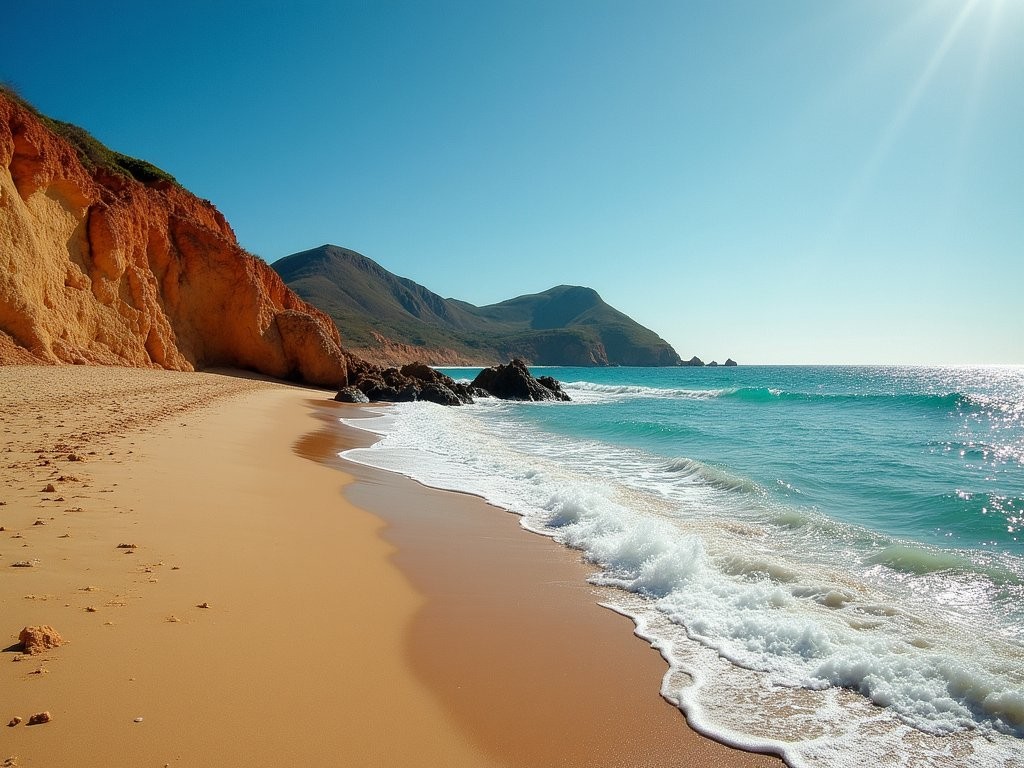
💡 Pro Tips
- Visit beaches early morning (before 9am) or late afternoon (after 4pm) to avoid both the strongest sun and the crowds
- Many beaches lack shade, so bring a beach umbrella or rent one locally
- Always carry water and small local currency for beach vendors who offer fresh coconuts and tropical fruits
Tarrafal Beach: The Crown Jewel
If Cape Verde's beaches were a cricket match, Tarrafal would undoubtedly be the century-scoring batsman—the undisputed star performer that leaves spectators in awe. Located on Santiago Island's northern tip, approximately 75 kilometers from Praia, this beach requires commitment to reach but rewards the journey with extraordinary beauty.
The drive itself merits mention, as it takes you through the island's varied topography, from arid landscapes reminiscent of certain Australian outbacks to lush mountain passes that could be mistaken for Caribbean highlands. This geographical diversity within a relatively compact island speaks to Cape Verde's unique position at the intersection of different climatic influences.
Tarrafal's perfect horseshoe bay is framed by coconut palms and the imposing Monte Graciosa, creating a natural amphitheater that seems designed specifically for sunset appreciation. The sand here is particularly fine—a light golden hue that remains cool underfoot even during midday heat. This geological detail isn't merely aesthetic; it reflects the beach's formation from different volcanic and coral elements than other beaches on the island.
What distinguishes Tarrafal beyond its physical beauty is the remarkable clarity of its waters. Having visited beaches across five continents, I can confidently place Tarrafal among the elite few where visibility extends beyond 20 meters even without snorkeling gear. This transparency isn't just visually pleasing—it indicates healthy marine ecosystems, something increasingly rare in heavily trafficked tourist destinations.
For couples seeking romantic seclusion, the northern end of the beach offers several hidden coves accessible via a short walk across volcanic rocks. These natural privacy screens create intimate spaces for conversation or quiet contemplation. I spent an afternoon in one such alcove, reviewing financial reports with a newfound clarity that only comes from the proper distance from one's daily concerns.
The beachfront restaurants deserve special mention for their authenticity. Unlike many tourist destinations where cuisine becomes homogenized, Tarrafal's establishments maintain traditional Cape Verdean recipes. The catchupa (a slow-cooked stew) at Restaurante Mar Azul offers a masterclass in how local agricultural limitations have produced ingenious culinary solutions—a theme that resonates throughout Cape Verdean culture.

💡 Pro Tips
- Arrange transportation in advance as taxis to Tarrafal can be expensive; consider hiring a driver for the day
- Bring snorkeling equipment to fully appreciate the underwater visibility
- Visit mid-week to avoid local weekend crowds from Praia
Beach Fashion & Textile Traditions
My fascination with the intersection of traditional craftsmanship and contemporary fashion found fertile ground in Cape Verde. The islands' beach culture has developed a distinctive aesthetic that merges practical considerations with artistic expression and historical influences.
Cape Verdean beach fashion reflects the nation's unique position between continents. You'll notice immediately that the typical tourist uniform of garish prints and mass-produced resort wear is refreshingly absent. Instead, locals and savvy visitors alike embrace a more sophisticated approach that respects both the climate and cultural context.
Men often wear lightweight cotton shirts with subtle geometric patterns that echo traditional weaving techniques. These aren't merely decorative—the patterns tell stories of maritime navigation, agricultural cycles, and family lineages. What appears to be simple beach attire actually carries centuries of cultural coding, much like how cricket whites represent more than just practical sportswear to those familiar with the game's traditions.
For women, the pano (traditional cloth) has evolved from its historical role as a utilitarian wrap to become a versatile beach accessory. Modern Cape Verdean designers have reimagined this textile tradition into contemporary cover-ups, sarongs, and even structured beachwear that maintains cultural authenticity while embracing current silhouettes.
During my stay, I visited Maria Nunes' workshop in Praia's Plateau neighborhood, where she creates handwoven panos using techniques passed down through generations. What struck me was her business model—a perfect balance sheet of tradition and innovation. By teaching younger artisans and collaborating with contemporary designers, she's ensuring both the economic and cultural sustainability of this craft.
For visitors seeking authentic souvenirs, I recommend investing in locally-made textile pieces rather than imported beach merchandise. Not only do these items carry genuine cultural significance, but they also directly support artisanal economies. I purchased several panos that now serve as distinctive home accessories, each one sparking conversations about Cape Verde's rich heritage.
For practical beachwear that respects both local sensibilities and provides adequate sun protection, I found my UPF 50+ rash guard invaluable. Unlike conventional sunscreen that requires frequent reapplication and can damage marine environments, this approach aligns with Cape Verde's growing environmental consciousness while honoring the modest dress code that prevails outside tourist enclaves.

💡 Pro Tips
- Support local artisans by purchasing authentic panos from workshop cooperatives rather than tourist shops
- Respect local dress codes—Cape Verdeans tend to be more modest than typical beach tourists
- Look for the distinctive 'panaria' weaving technique in textiles for the most authentic souvenirs
Santa Maria Beach: Day Trip to Sal Island
While my primary focus remained on Praia's coastal offerings, no comprehensive guide to Cape Verdean beaches would be complete without mentioning Santa Maria Beach on neighboring Sal Island. This excursion requires a short domestic flight, but the contrast between Santiago's volcanic landscapes and Sal's desert-like terrain provides valuable context for understanding Cape Verde's geographical diversity.
Santa Maria represents Cape Verde's most developed beach destination—the closest the nation comes to conventional tourism. Yet even here, where international influences are most pronounced, the underlying Cape Verdean character remains evident in subtle ways that the discerning traveler will appreciate.
The beach itself stretches for eight kilometers of uninterrupted white sand, with water clarity that rivals the Caribbean's finest shores. What distinguishes Santa Maria from comparable destinations is the wind—a constant presence that has shaped both the physical landscape and the local culture. This persistent breeze creates ideal conditions for kitesurfing and windsurfing, activities that have become integral to Santa Maria's identity.
During my visit, I arranged a kitesurfing lesson with Mitu Monteiro's school—a rare opportunity to learn from a world champion who has translated his sporting success into a sustainable local business. The experience offered fascinating parallels to cricket, particularly in how subtle weight shifts and positioning create dramatic effects in performance. My finance-trained mind couldn't help but note how this operation balanced commercial viability with authentic community integration—a case study in sustainable tourism development.
Beyond water sports, Santa Maria offers a window into Cape Verde's evolving relationship with international tourism. The town has developed rapidly over the past decade, yet municipal regulations have prevented the high-rise development that characterizes many beach destinations. The result is a refreshingly human-scaled environment where boutique hotels and family-run restaurants predominate.
For accommodation, I recommend the beach tent for day visitors wanting shade and privacy. While many tourists rent beach loungers, having your own portable shelter allows you to explore different sections of this extensive beach without being tethered to a single location.
The salt pans near Santa Maria provide historical context for the island's development. These crystalline formations once represented Cape Verde's primary export commodity, and the guided tours offered by former salt workers provide valuable economic opportunities while preserving industrial heritage. This transformation of historical infrastructure into cultural assets represents a sustainable approach to development that more destinations could learn from.

💡 Pro Tips
- Book domestic flights between islands well in advance as they fill quickly during peak season
- Visit the salt pans early morning for the best photographic conditions and cooler temperatures
- For kitesurfing, book lessons at least one day in advance and request an instructor who speaks your language
Local Beach Culture & Etiquette
Understanding Cape Verde's beach culture requires looking beyond the physical landscapes to appreciate the social dynamics that unfold along these shores. Unlike many tropical destinations where beaches primarily serve tourist economies, Cape Verde's coastal areas remain integral to local life—functioning as community spaces, economic zones, and cultural stages simultaneously.
My background in sports management has taught me that every recreational space operates according to unwritten rules, and Cape Verde's beaches are no exception. The first principle visitors should observe is timing. Locals typically avoid midday heat, with beaches coming alive in late afternoon when families gather and the day's fishing catches are brought ashore. Arriving around 4pm offers travelers the dual benefit of more comfortable temperatures and authentic cultural immersion.
The fishing tradition remains central to Cape Verdean coastal communities, creating a fascinating morning ritual worth witnessing. Between 6-8am at beaches like Quebra Canela, you'll observe fishermen returning with their catches, often using traditional methods that have remained largely unchanged for generations. This isn't staged for tourists—it's a genuine economic activity that connects directly to the seafood you'll enjoy at local restaurants later that day.
Music forms another cornerstone of beach culture here. The morna style—made internationally famous by Cesária Évora—often emerges spontaneously during evening gatherings. These informal performances create the soundtrack to sunset beach sessions, with lyrics that frequently reference maritime themes and island life. During my stay, I witnessed an elderly gentleman begin singing while mending nets, gradually drawing a circle of performers who added harmonies and instrumental accompaniment. Such organic cultural expressions cannot be scheduled or commodified—they must be encountered through patient observation.
Regarding etiquette, Cape Verdean beaches operate with subtle codes that respectful visitors should observe. Photography deserves particular mention—while landscape shots are welcomed, photographing individuals (especially fishermen at work or families) should only be done after establishing rapport and receiving clear permission. This isn't merely about privacy but about recognizing the dignity of daily work rather than treating it as exotic spectacle.
For beach picnics, I found my insulated cooler bag essential for keeping drinks and snacks cool in the tropical heat. However, I learned to supplement store-bought provisions with items from local vendors—purchasing fresh coconuts, grilled corn, or catchupa from beach sellers represents both culinary authenticity and economic support for micro-entrepreneurs.
Dress codes at Cape Verdean beaches tend toward modesty compared to some European destinations. While tourist areas accommodate international norms, on public beaches frequented by locals, women typically wear one-piece swimsuits or tankinis rather than revealing bikinis, and men opt for longer board shorts rather than brief-style swimwear. Adapting to these subtle norms demonstrates cultural sensitivity that locals notice and appreciate.

💡 Pro Tips
- Learn a few phrases in Cape Verdean Creole (Kriolu) such as 'Bondia' (good morning) and 'Obrigado' (thank you) to connect with locals
- When invited to join local beach gatherings, bringing a small contribution of drinks or snacks is appreciated
- Remove shoes when entering someone's home after the beach—sand is considered particularly intrusive in domestic spaces
Sustainable Beach Tourism & Conservation Efforts
My financial background inevitably colors how I evaluate tourism development—looking beyond immediate returns to assess long-term sustainability and externalities. Cape Verde presents a fascinating case study in how a small island nation navigates the delicate balance between economic opportunity and environmental preservation.
Praia's approach to beach tourism diverges significantly from many tropical destinations that have pursued volume-based models. Instead, Cape Verde has increasingly positioned itself in the mid-to-upper market segment, emphasizing quality experiences over visitor numbers. This strategy aligns with both environmental carrying capacity and the creation of higher-value employment opportunities for locals.
The Turtle Foundation's work on Santiago Island demonstrates this principle in action. This NGO partners with former poachers, transforming them into conservation guides who protect nesting sites and educate visitors about the five marine turtle species that frequent Cape Verdean waters. During nesting season (July through October), guided turtle watching tours create economic incentives that align community interests with conservation outcomes—a perfect example of sustainable development principles.
Plastic pollution, the scourge of many beach destinations, receives serious attention here. The government's ban on single-use plastics has been complemented by community-led beach cleaning initiatives. At Quebra Canela, I participated in a Saturday morning clean-up organized by local schools, where students cataloged collected waste for a citizen science project tracking marine debris origins. My reusable water bottle proved essential throughout my trip, allowing me to avoid contributing to the plastic waste stream while staying hydrated in the tropical climate.
Water conservation presents another critical sustainability challenge. Cape Verde ranks among the world's most water-stressed nations, with limited rainfall and few natural freshwater sources. Forward-thinking accommodations like Praia's Pestana Tropico Hotel have implemented gray water recycling systems for garden irrigation and low-flow fixtures that reduce consumption without compromising guest comfort. As a visitor, being mindful of water usage represents both environmental responsibility and respect for local resource constraints.
Marine protected areas around Santiago Island deserve particular mention for their innovative management approach. Rather than imposing conservation frameworks that exclude traditional users, these reserves incorporate local fishing knowledge into their governance structures. Designated zones allow sustainable harvesting while protecting critical habitats and breeding grounds. This balanced approach recognizes that human communities must benefit from conservation for it to succeed long-term.
For visitors seeking to minimize their environmental footprint while maximizing positive community impact, I recommend engaging with tour operators certified by the Cape Verde Sustainable Tourism Initiative. This local certification program verifies businesses that meet specific environmental standards and contribute meaningfully to community development. By directing your tourism spending toward certified operators, you create market incentives that reward sustainable practices.

💡 Pro Tips
- Choose accommodations with verifiable sustainability practices like water conservation systems and waste reduction programs
- Support restaurants serving locally-caught fish from sustainable species (ask about 'peixe sustentável')
- Consider carbon offsetting your flights through programs that fund renewable energy projects in Cape Verde
Final Thoughts
Cape Verde's beaches offer far more than picturesque backdrops for vacation photographs—they provide windows into a nation's soul, where maritime heritage, cultural resilience, and sustainable development intersect in fascinating ways. As someone who has always been drawn to these types of intersections, I found Praia's coastal landscapes particularly compelling for how they balance competing priorities: economic opportunity and environmental protection, cultural authenticity and tourism development, traditional practices and modern innovations.
What distinguishes Cape Verde from comparable destinations is its refusal to be defined solely by its natural assets. The beaches here aren't marketed as empty paradises awaiting visitor occupation but as living spaces where generations of island wisdom continue to evolve. For couples seeking more than mere escapism, this approach offers something increasingly rare in travel—the opportunity to engage with a place on its own terms rather than through the distorting lens of tourism marketing.
As you plan your own journey to these shores, I encourage you to approach Cape Verde with both curiosity and respect. The rewards of such engagement extend far beyond spectacular sunsets and pristine swimming conditions to include genuine cultural exchange and deeper understanding of how island communities navigate the complexities of the modern world.
✨ Key Takeaways
- Cape Verde's beaches offer diverse experiences from urban accessibility to remote seclusion, all within relatively short distances
- Understanding local beach culture and etiquette enhances your experience while showing respect for Cape Verdean communities
- Supporting sustainable tourism initiatives helps preserve these coastal treasures for future generations
📋 Practical Information
Best Time to Visit
November through April (dry season with consistent temperatures)
Budget Estimate
$100-150 per day for mid-range accommodations, meals, and activities
Recommended Duration
7-10 days to explore multiple beaches and include a day trip to Sal Island
Difficulty Level
Easy



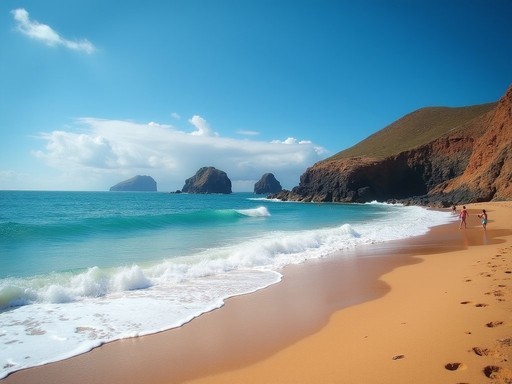
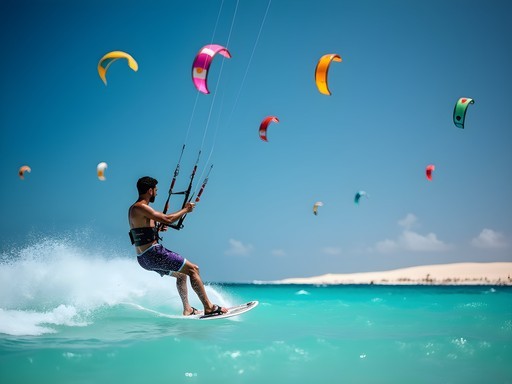




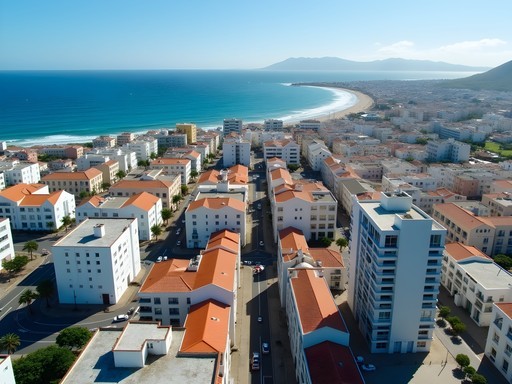
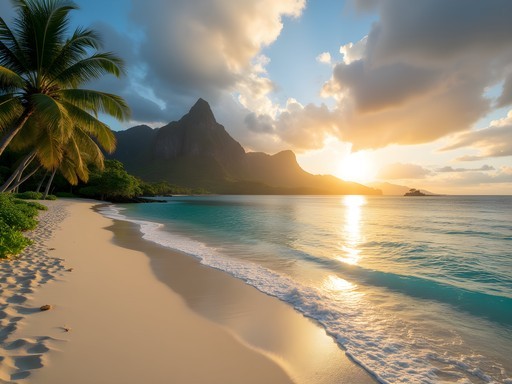

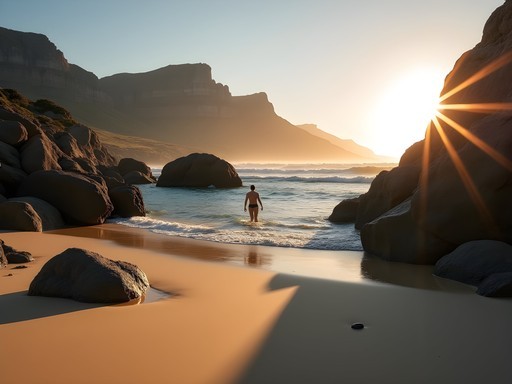
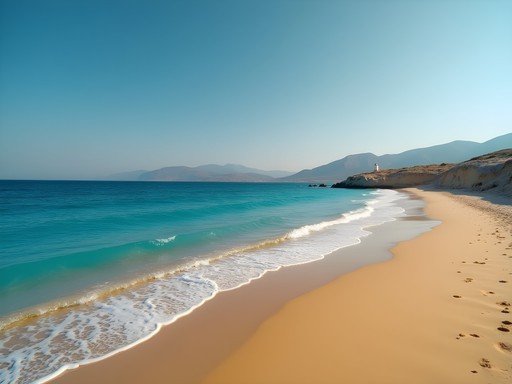
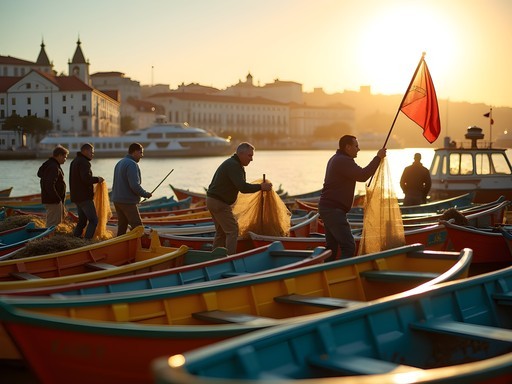

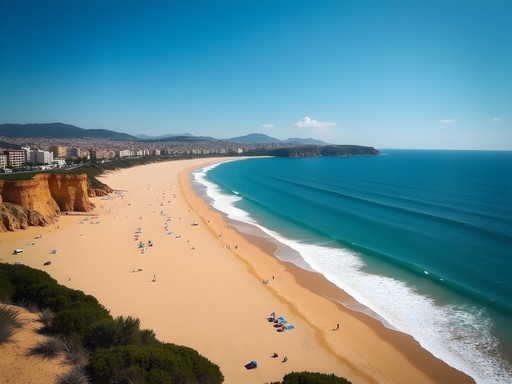
Comments
wanderlusttime
Tarrafal > Santa Maria any day. Less tourists, more authentic vibe.
Priya Sharma
Alan, thank you for highlighting the cultural significance of Cape Verde's beaches beyond just their physical beauty. We took our children (12 and 14) to Praia last summer, and your observation about beaches being 'windows into a nation's soul' resonated deeply. The day trip to Santa Maria Beach on Sal Island was the highlight of our journey. One recommendation for families: the local seafood restaurants along Quebra Canela Beach in Praia offer wonderful child-friendly options and the calm waters there are perfect for younger swimmers. What struck me most was how the maritime traditions influence everything from the cuisine to the music you'll hear playing along the shore. The cachupa fish variant we tried was extraordinary!
photorider
The lighting in your beach shots is incredible! What time of day did you visit Tarrafal? I'm heading there in January and want to catch similar golden hour vibes. I just got a travel tripod for the trip and can't wait to use it for some long exposures at sunset.
tripbackpacker8612
Great post! Is Tarrafal Beach good for swimming? I've heard some Cape Verde beaches have strong currents.
wanderlusttime
Been to Tarrafal twice. The bay is pretty sheltered, so swimming is safe most days. The northern beaches get rougher waves.
tripbackpacker8612
Thanks for the info! That's perfect.
moonninja
Those sunset pics from Santa Maria Beach are giving me LIFE right now! 😍
Megan Martin
Alan, your piece on Cape Verde's beaches perfectly captures that cultural intersection you mentioned. I visited Praia last year for a conference and extended my stay specifically to explore Tarrafal Beach. The contrast between the business hub of Praia and the tranquility of Tarrafal is striking! I found the local textile traditions fascinating - ended up bringing home several panos (traditional cloths) that now serve as beautiful reminders of the trip. Your section on beach fashion was spot on - there's such a unique blend of African and Portuguese influences.
starmood
Did you find it easy to get from Praia to Tarrafal? Thinking about a solo trip there!
Megan Martin
Absolutely! I took an aluguer (shared minibus) from Praia to Tarrafal. It was about a 1.5 hour journey but incredibly scenic and very affordable. Just make sure to start early as the last return buses leave mid-afternoon.
starmood
These beaches look absolutely stunning! Cape Verde just shot to the top of my bucket list!
sunnyphotographer
Going to Cape Verde next month! Is December a good time for swimming at these beaches?
freemaster
December is perfect! Water's around 24°C (75°F) and it's less crowded. Winds can pick up but Tarrafal is usually sheltered. Enjoy!
Jean Wells
Alan's analysis of the textile traditions is spot on. As someone who's visited 47 countries, I find Cape Verde's pano cloth particularly fascinating - it represents such a beautiful fusion of African and Portuguese influences. I spent two weeks in Praia last year and would add that Santa Maria Beach on Sal is worth more than just a day trip if you can manage it. The winds make it perfect for kitesurfing (I took lessons with a local instructor). For anyone planning a visit, I'd recommend bringing a quick-dry travel towel as the sand gets everywhere, and the local beach towels, while beautiful, take forever to dry in the humidity. November-December is actually my preferred time to visit - fewer tourists and the temperature is perfect.
happyperson
Thanks for the tip about November! I was thinking about going in September but maybe I'll push it back a bit.
Jean Wells
September is still rainy season - not terrible, but you might get a few afternoon showers. November is when things really dry out and the winds become more consistent for water sports!
Timothy Jenkins
Alan, you've captured the essence of Praia's beaches beautifully. I spent a month island-hopping Cape Verde last year, and the contrast between Praia's urban beaches and Tarrafal's pristine cove is striking. One tip for readers: the water at Quebra Canela Beach near Praia gets quite rough - perfect for experienced surfers but families should be cautious. The beach bars there serve the best grogue sour cocktails though! The cultural fusion in Cape Verde is truly unique - Portuguese, African and Brazilian influences creating something entirely its own. Did you explore any of Santiago's interior mountain villages while there?
Alan Knight
Thanks Timothy! Great point about Quebra Canela - should've mentioned the current. And yes, I spent a few days in Assomada and Picos. The terraced agriculture and colonial architecture were fascinating contrasts to the coastal areas. Next time I want to hike Serra Malagueta!
Venture X
Premium card with 2X miles, $300 travel credit, Priority Pass